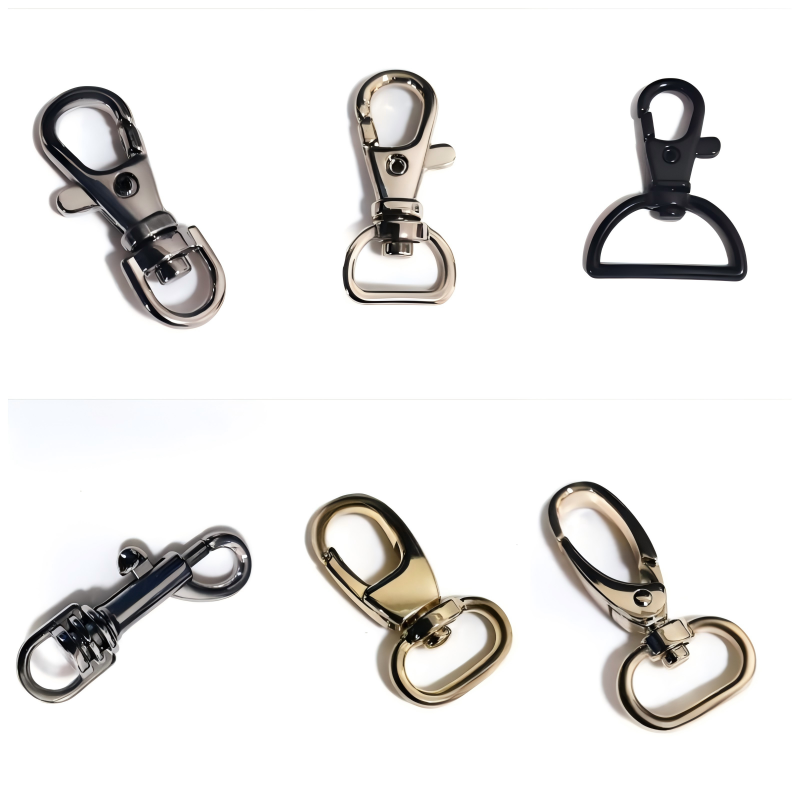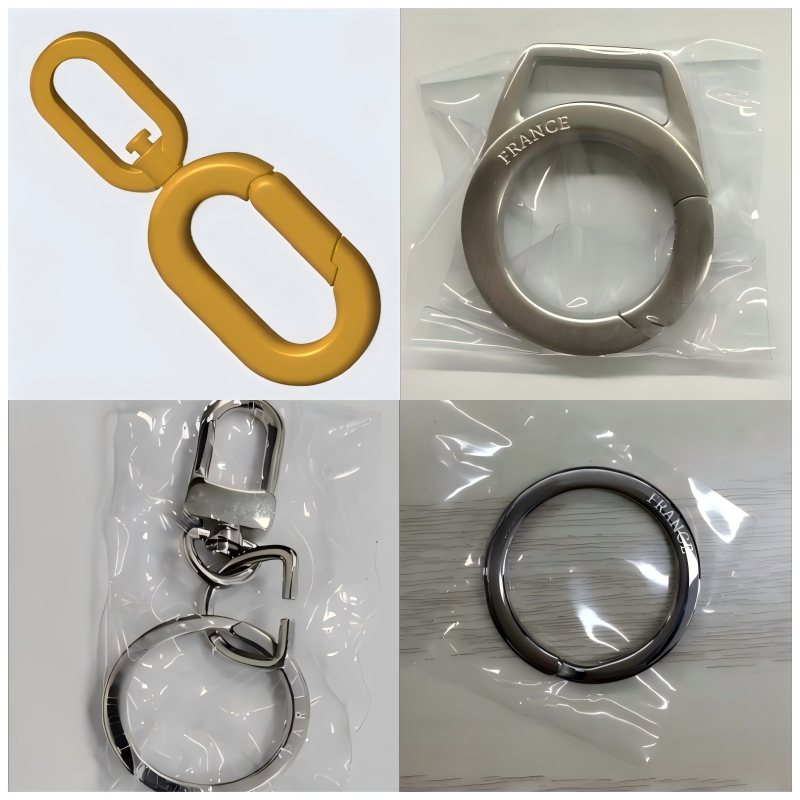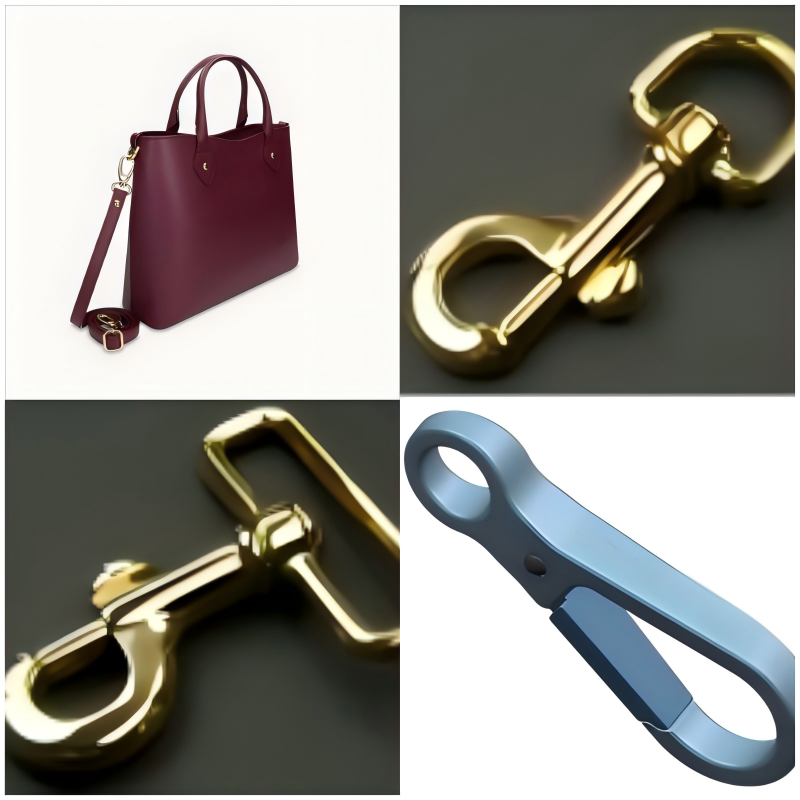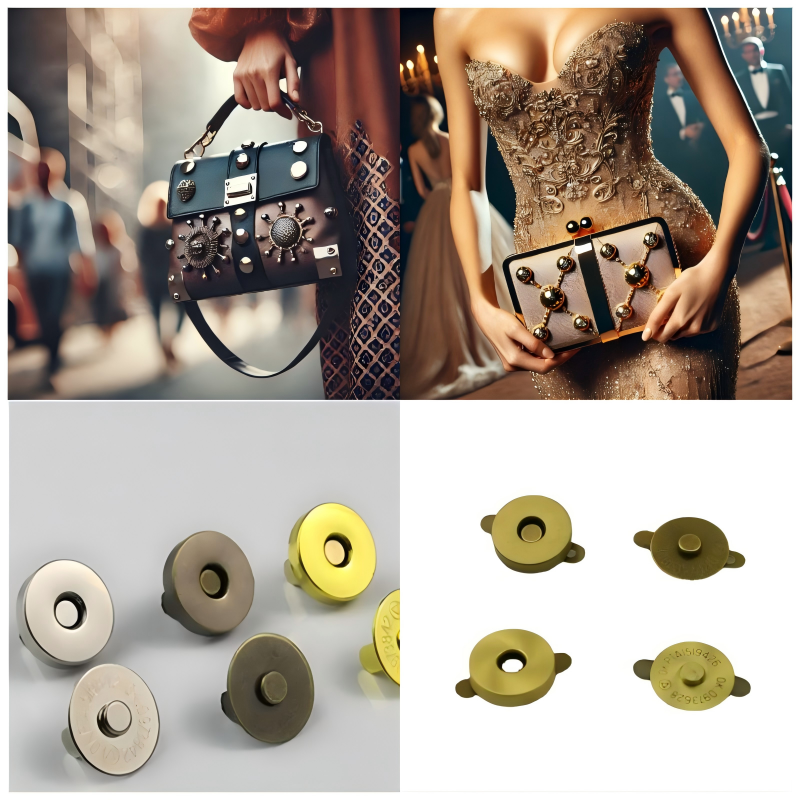How to Enhance the Durability, Shine, and Corrosion Resistance of Handbag Hardware
How to Enhance the Durability, Shine, and Corrosion Resistance of Handbag Hardware
Handbag hardware plays a crucial role in both aesthetics and functionality, influencing the overall quality, longevity, and appeal of a handbag. To ensure long-lasting durability, a high-gloss finish, and superior rust resistance, manufacturers must carefully select materials, apply advanced surface treatments, and implement quality control measures. Below are key strategies to enhance the performance and lifespan of handbag hardware.
1. Choosing High-Quality Materials
The foundation of durable handbag hardware starts with selecting premium metals that offer strength and resistance to wear and corrosion. Common materials include:
Stainless Steel: Naturally resistant to rust and oxidation, making it ideal for high-end handbags.
Brass: Offers a luxurious appearance and excellent corrosion resistance, often used in designer bags.
Zinc Alloy: A cost-effective material with good durability when properly plated and coated.
Aluminum Alloy: Lightweight yet strong, suitable for modern, minimalist handbag designs.
Tip: Avoid low-quality alloys that are prone to tarnishing, discoloration, and structural weakening over time.
2. Enhancing Durability with Surface Treatments
Even high-quality metals require protective coatings and finishes to maintain their structural integrity and aesthetic appeal. Some effective surface treatments include:
Electroplating: A thin metal coating (e.g., gold, nickel, or palladium) enhances both appearance and corrosion resistance.
PVD Coating (Physical Vapor Deposition): A high-tech process that deposits a hard, wear-resistant layer, significantly improving scratch resistance and shine.
Anodizing (for Aluminum Hardware): Strengthens the surface and prevents oxidation, while also allowing for vibrant color finishes.
Anti-Tarnish Coatings: Transparent protective layers prevent oxidation, fingerprints, and chemical reactions that cause discoloration.
Tip: Handbag brands seeking long-lasting shine and wear resistance should opt for multi-layer electroplating or PVD coatings, as these processes extend the hardware’s lifespan significantly.
3. Improving Corrosion Resistance
Exposure to humidity, sweat, and environmental pollutants can cause handbag hardware to corrode over time. To prevent this, consider:
Applying a Clear Protective Sealant: A thin lacquer or nano-coating acts as a barrier against moisture and oxidation.
Using Corrosion-Resistant Base Materials: Metals like stainless steel and brass naturally resist rust and require less maintenance.
Enhancing Plating Thickness: A thicker electroplated layer (e.g., 3-5 microns of gold or nickel) provides better protection.
Testing for Salt Spray Resistance: Ensuring hardware passes 48–72 hours of salt spray testing guarantees durability in humid environments.
Tip: For handbags designed for tropical climates or all-weather use, rust-proof coatings and high-quality plating are essential.
4. Maintaining Gloss and Shine
Over time, exposure to air, moisture, and friction can dull the polish and reflective finish of handbag hardware. To maintain long-lasting shine:
Use High-Precision Polishing Techniques: Machine and hand polishing create a mirror-like surface that enhances light reflection.
Apply UV-Resistant Clear Coats: Prevents fading and discoloration due to prolonged sun exposure.
Regular Cleaning with Non-Abrasive Solutions: A microfiber cloth and mild soapy water help remove dirt and oils without scratching the surface.
Tip: Luxury brands often use diamond-cut polishing or multi-layer coatings to achieve a deep, long-lasting luster.
5. Quality Control and Wear Testing
To ensure handbag hardware meets premium standards, manufacturers should implement:
Abrasion and Scratch Resistance Tests: Simulating long-term use by applying friction and impact stress.
Salt Spray and Humidity Tests: Evaluating corrosion resistance in different environmental conditions.
Load-Bearing Tests for Functional Hardware: Checking the durability of zippers, clasps, D-rings, and buckles under weight and pressure.
Tip: Investing in high-precision manufacturing and strict quality control prevents premature hardware failures and customer complaints.
Conclusion
Enhancing the durability, shine, and rust resistance of handbag hardware requires high-quality materials, advanced coatings, and meticulous quality control. By choosing premium metals, applying protective finishes, and conducting thorough wear tests, handbag brands can ensure their hardware remains luxurious, long-lasting, and resistant to environmental damage.
Would you like additional insights tailored to specific handbag types or hardware styles?








